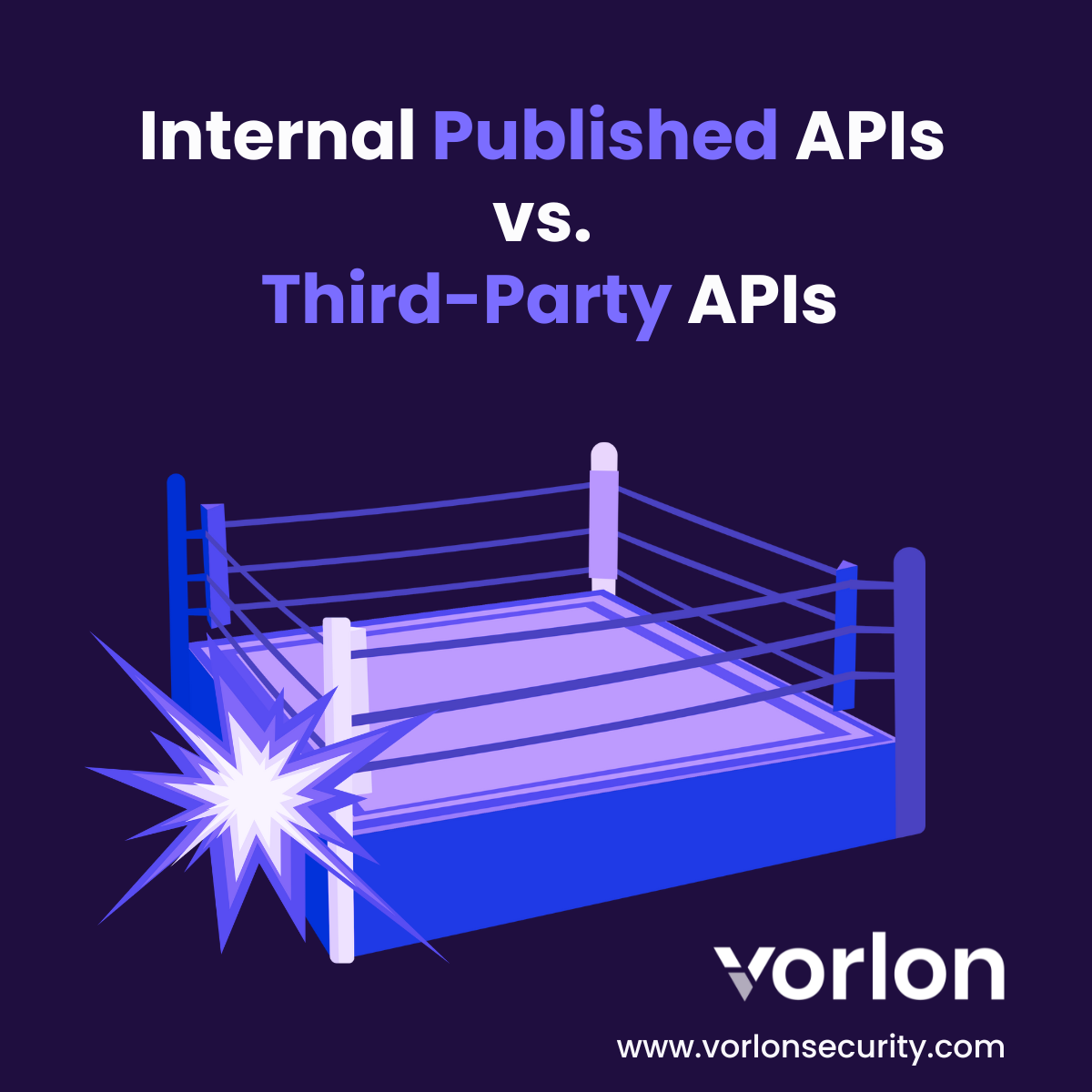
On the digital battlefield where APIs (Application Programming Interfaces) reign supreme, knowing the strengths and weaknesses of internal versus third-party APIs is crucial for any tech-savvy organization aiming to secure its operations. This blog will dive into the defining characteristics of both internal and third-party APIs, comparing their performance in the arena of security and efficiency, and demonstrating how Vorlon offers strategic advantages in monitoring third-party APIs to mitigate risks. Who would win in a fight? Let’s find out.
Our First Contender: Internal APIs
Internal APIs are those that organizations create and publish to facilitate communication between their internal systems or services. These APIs serve as a bridge, allowing different applications to interact and share data seamlessly.
Battle Stats for Internal APIs:
- Controlled Environment: Internal APIs are primarily used within the organization, providing developers with control over the API's design and functionality.
- Access to Internal Resources: These APIs enable internal teams to build applications that leverage the organization's data and services, fostering innovation and efficiency.
- Limited Exposure: While internal APIs are designed for internal use, some organizations may expose certain functionalities to trusted external partners or clients, blurring the line between internal and external access.
Our Next Contender: Third-Party APIs
On the other hand, third-party APIs are provided by external organizations, allowing developers to integrate external services or data into their applications. These APIs can enhance functionality and offer capabilities that may be outside the organization's expertise.
Battle Stats for Third-Party APIs:
- Wide Accessibility: Third-party APIs are generally open for use by anyone, making it easy for developers to access a wealth of external services.
- Diverse Use Cases: Examples include payment gateways, social media integrations, and data feeds from external sources that enrich an application’s capabilities.
- Dependency on External Providers: Organizations must rely on third-party providers for service availability and security, which can pose risks.
How Do They Stack Up Against Each Other?
- Control: Organizations have complete control over internal APIs, allowing for customization to fit specific needs. In contrast, third-party APIs come with constraints set by the external provider.
- Security: Internal APIs can be tightly controlled and monitored by the organization, while third-party APIs can introduce risks if not properly secured and monitored.
- Flexibility: Internal APIs can be tailored to meet unique organizational requirements, whereas third-party APIs often have rigid structures that may not fully align with specific business needs.
Security Risks Associated with Third-Party APIs
While third-party APIs offer numerous benefits, they also present security challenges. Potential risks include:
- Risks: Third-party APIs can expose organizations to data leaks and unauthorized access, particularly if the external provider has security gaps.
- Compliance Issues: Integrating third-party APIs can complicate regulatory compliance, making it essential for organizations to monitor API usage closely to protect sensitive data.
In the Purple Corner....Vorlon!
Monitoring third-party APIs becomes vital for maintaining security and compliance. This is where Vorlon fills in.
- Continuous Risk Monitoring: Ongoing risk scoring for third-party apps, secrets, and users.
- Secrets Inventory: Tracks metadata and activity of all third-party secrets, providing insights into their lifecycle and usage.
- Threat Enrichment: Built-in data enrichment, including malicious IP identification, speeds up threat investigations.
- Real-Time Analysis: Monitors data flows in near real-time to detect anomalies and malicious activity.
- Compliance Prevention: Proactively manages third-party access to sensitive data, reducing the risk of compliance violations.
- Behavioral Alerts: Sends immediate alerts via SMS, Slack, or Microsoft Teams when anomalies are detected.
- Quick Fixes: Enables rapid response to issues by allowing secret revocation or rotation within minutes.
Conclusion
While internal APIs offer control and customization, third-party APIs provide access to valuable external resources. However, the security risks associated with third-party APIs necessitate vigilant monitoring.
By leveraging solutions like Vorlon, organizations can enhance their API security posture, ensuring safe integration of third-party services while mitigating potential risks. As the digital landscape continues to evolve, proactive monitoring of APIs will be paramount for safeguarding organizational assets and maintaining trust with clients and partners.